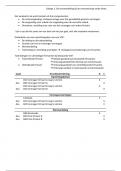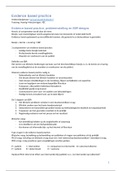UNITED ARAB EMIRATES UNIVERSITY
Department of Biological Sciences
BIOM339 - VIROLOGY:Virus-Host Interactions:
A Delicate Dance of Infection and Defense
Introduction
Viruses, the smallest and simplest biological entities capable of
replication, engage in a complex and intricate interaction with their
hosts, the organisms they invade and exploit for their own survival.
These interactions, often characterized as a delicate dance between
infection and defense, determine the outcome of viral infections,
ranging from asymptomatic colonization to severe disease and even
death. Understanding the mechanisms governing virus-host
interactions is crucial for developing effective antiviral strategies,
vaccines, and therapeutic interventions.
Initial Encounter: Virus Attachment and Entry
The initial encounter between a virus and its host occurs when the virus
particle, termed a virion, attaches to specific receptors on the host cell
surface. These receptors act as molecular bridges, enabling the virus to
establish a foothold on the host cell. The attachment process is highly
specific, as each virus recognizes and binds to a unique set of receptors
on its target host cells.
, Following successful attachment, the virus particle undergoes a process
called entry, whereby it gains access to the host cell's interior. The
mode of entry varies depending on the type of virus. Some viruses,
such as influenza viruses, enter the host cell by fusing their envelope
with the host cell membrane, while others, like adenoviruses, utilize
endocytosis, a process in which the host cell engulfs the virus particle
into a membrane-bound vesicle.
Viral Replication: Hijacking the Host's Machinery
Once inside the host cell, the virus embarks on its primary objective:
replication. This intricate process involves the synthesis of new viral
proteins and the production of viral progeny. To achieve this, viruses
employ a clever strategy of hijacking the host cell's machinery, utilizing
the host's cellular components and metabolic processes for their own
benefit.
Viral replication typically involves several key steps:
1. Uncoating: The virus sheds its capsid, exposing its genetic material.
2. Transcription: The viral genome is transcribed into viral mRNA
molecules.
3. Translation: The viral mRNA molecules are translated into viral
proteins by the host cell's ribosomes.
4. Genome Replication: Viral enzymes replicate the viral genome,
producing new copies of the genetic material.
Department of Biological Sciences
BIOM339 - VIROLOGY:Virus-Host Interactions:
A Delicate Dance of Infection and Defense
Introduction
Viruses, the smallest and simplest biological entities capable of
replication, engage in a complex and intricate interaction with their
hosts, the organisms they invade and exploit for their own survival.
These interactions, often characterized as a delicate dance between
infection and defense, determine the outcome of viral infections,
ranging from asymptomatic colonization to severe disease and even
death. Understanding the mechanisms governing virus-host
interactions is crucial for developing effective antiviral strategies,
vaccines, and therapeutic interventions.
Initial Encounter: Virus Attachment and Entry
The initial encounter between a virus and its host occurs when the virus
particle, termed a virion, attaches to specific receptors on the host cell
surface. These receptors act as molecular bridges, enabling the virus to
establish a foothold on the host cell. The attachment process is highly
specific, as each virus recognizes and binds to a unique set of receptors
on its target host cells.
, Following successful attachment, the virus particle undergoes a process
called entry, whereby it gains access to the host cell's interior. The
mode of entry varies depending on the type of virus. Some viruses,
such as influenza viruses, enter the host cell by fusing their envelope
with the host cell membrane, while others, like adenoviruses, utilize
endocytosis, a process in which the host cell engulfs the virus particle
into a membrane-bound vesicle.
Viral Replication: Hijacking the Host's Machinery
Once inside the host cell, the virus embarks on its primary objective:
replication. This intricate process involves the synthesis of new viral
proteins and the production of viral progeny. To achieve this, viruses
employ a clever strategy of hijacking the host cell's machinery, utilizing
the host's cellular components and metabolic processes for their own
benefit.
Viral replication typically involves several key steps:
1. Uncoating: The virus sheds its capsid, exposing its genetic material.
2. Transcription: The viral genome is transcribed into viral mRNA
molecules.
3. Translation: The viral mRNA molecules are translated into viral
proteins by the host cell's ribosomes.
4. Genome Replication: Viral enzymes replicate the viral genome,
producing new copies of the genetic material.











